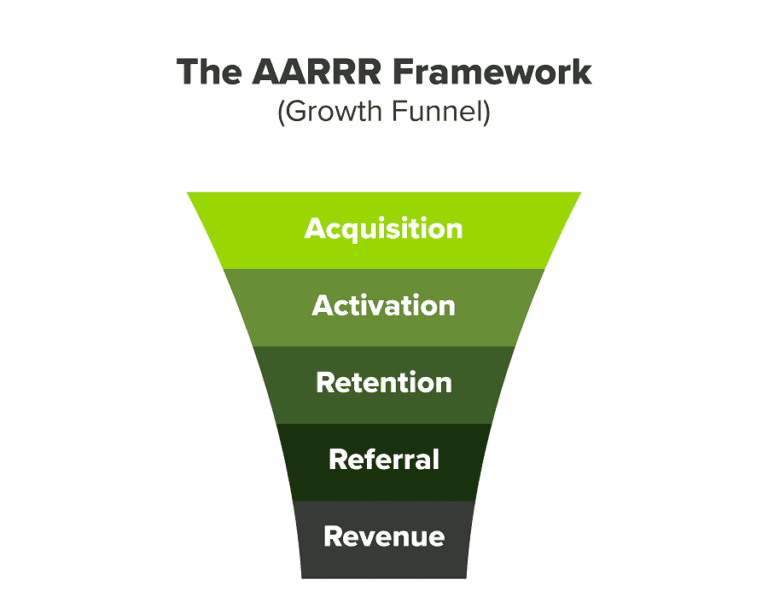Rob Sobers said about the marketing growth strategy, “It’s not about tactics—it’s about people and process.”
And when it comes to people, you need buy-in from all over the organization. Growth is everyone’s business.
When it comes to process, growth marketers must learn to fail. And fail fast.
A marketing growth strategy is about small and incremental wins that build up over time.
In this article, you’ll learn how to build a marketing growth strategy to increase your market penetration, market share, and revenue.
Table of contents
Rapid experimentation is critical to your growth marketing strategy
Growth marketing is about process over tactics. A marketing growth strategy goes deeper into customer relationships to uncover opportunities that engage, activate, and retain.
Growth marketing aims to add value throughout the entire marketing funnel, whereas brand marketing focuses on top-of-funnel activities like awareness.
The growth marketing process is all about rapid experimentation, learning, and adaptability. To drive growth, test ideas, implement what works, scrap the failures, and keep experimenting.
To say the business landscape is competitive is an understatement. In 2020, there were 8,000 martech solutions.
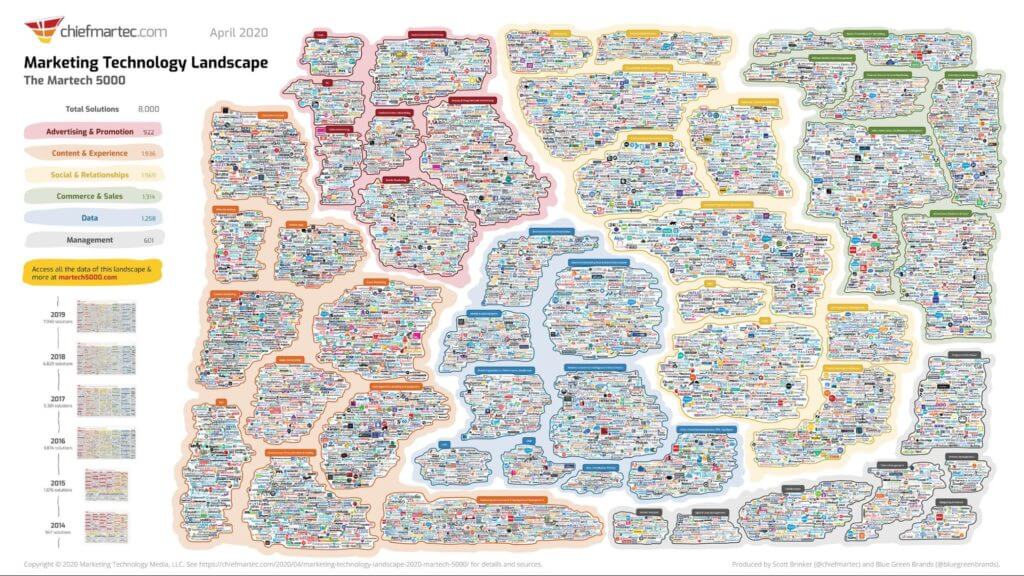
In such a fast-paced environment, to “fail fast” is to win.
Failing fast is different from failing often. The goal is to test ideas intentionally and get answers quickly, then iterate and continuously improve.
This philosophy comes from The Lean Startup methodology, which relies on testing hypotheses to better understand your customers’ pain points and goals.
The reality is that we don’t know what our customers want most of the time.
Running experiments allows you to test what you think you know about your customers, rather than investing time, resources, and budget into an idea that ends up not yielding results.
Each experiment helps you learn more about your customers and generate foundational data for future experiments and marketing efforts. In this way, they are continuous feedback loops that help you find the message and marketing approaches that will achieve your growth goals.
Your customers want different things. To drive loyalty, tailor the experience to what each customer values.
To truly differentiate your brand, center your growth strategy around creating unique and personalized customer experiences.
Getting to know the 4 major types of growth strategies in marketing
The Ansoff Matrix, named for its strategist creator Igor Ansoff, can be a helpful tool as you evaluate growth opportunities.
It outlines four major growth strategies: market penetration, market development, product development, and diversification.
Marketers can use this framework to evaluate the risks associated with different growth strategies. Market penetration is the least risky and diversification is the riskiest strategy.

1. Market penetration
The goal of market penetration is to leverage new tactics to increase product sales, including existing customers and new customers within existing markets.
This strategy can be useful for established companies looking to grow but don’t have a pressing need to expand beyond their niche.
It can also be helpful for startups looking to expand without the resources to branch out beyond their existing target markets.
For example, in 2021 accounting software platform Bill.com acquired spend management tool Divvy in order to increase its market share. Bill.com penetrated this market by taking over a company already in it and reported increased fourth-quarter earnings of $78.3 million (including over $10 million from Divvy).
Growth marketers can penetrate a new market by running experiments like:
- Sales and promotions. A more aggressive promotion or advertising strategy can help your brand reach a larger group of your target customers.
- Revisiting pricing strategy. Dropping the price of your products or offering a lifetime plan may attract new customers and sales.
- Customer experience improvements. Tailoring your customer experience according to their wants and needs can increase customer loyalty and advocacy.
- Acquiring a competitor. Acquisitions can quickly increase your market share and bring in new customers.
2. Market development
Market development involves taking existing products into new markets. These markets will have varying levels of familiarity with your brand and products.
New markets include geographic regions, new customer segments, or new channels to reach your customers (digital or physical).
It’s a lucrative move for businesses with truly unique products. Especially if customers have high purchasing power, meaning a more profitable market.
If your desired customers have similar needs and behavior to your existing customers, you can employ similar tactics that have already worked well for you.
Such as UK-based money app Cleo’s expansion into the United States:
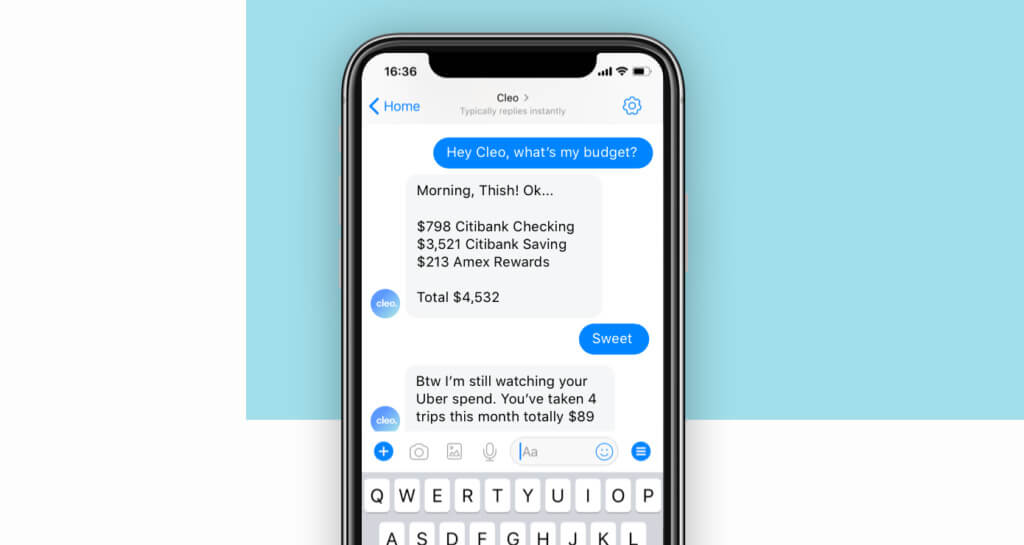
Cleo’s marketing team might test actions like:
- Regional or global expansion. Expanding into foreign markets or untapped domestic markets.
- New customer segments. Catering your marketing and promotional efforts to reach a new type of customer.
- New channels. Building new revenue streams in an untapped channel, like content marketing or email marketing.
3. Product development
Product development allows you to expand your existing market share by developing a new product for that audience.
This is what happened with Clubhouse. In 2020, Clubhouse established a market for an audio-only social platform. Then competitors came into this existing market with their own products.
Such as Twitter Spaces:

And Facebook’s audio chat rooms:
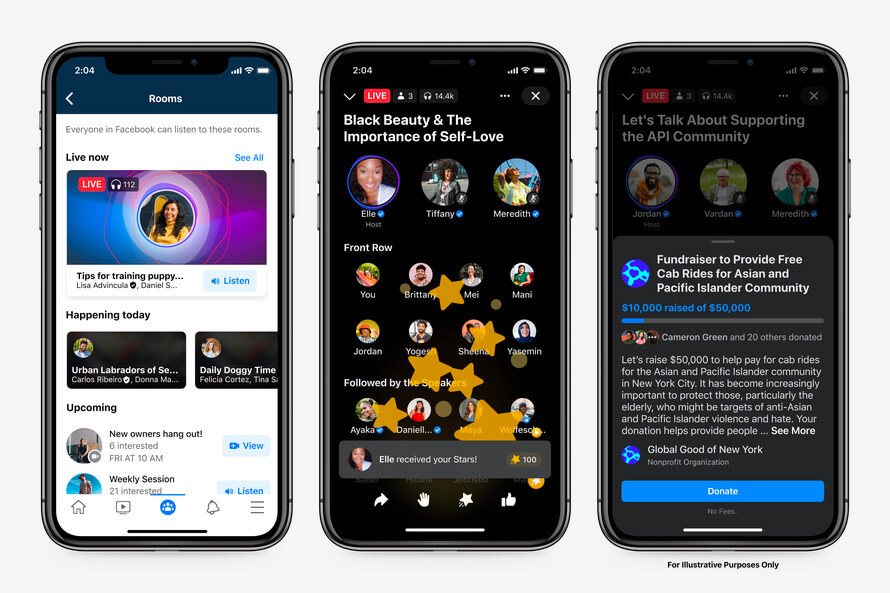
And Spotify’s Greenroom:

This strategy is only possible with a deep knowledge of your customer. By understanding what pain points exist, you have the opportunity to alleviate them.
During product development, test activities like:
- R&D. Investing in research and development to create new products for the existing market.
- Acquisitions. Companies can acquire competitors’ products or technology to enhance their offering within the market they already serve.
- Partnerships. Strategic alliances with other brands to develop offerings or leverage each others’ distribution channels.
4. Diversification
Diversification by taking a new product into a new market can be risky but lucrative. It can set you up for future growth within a new market, allowing you to test new growth strategies within the new market it now has access to.
Depending on the type of diversification you pursue, you can mitigate some associated risks.
The two types of diversification where growth marketers might test include:
- Related diversification. The brand has some existing relation to the new product or market it wants to pursue.
For example, a SaaS company that primarily caters to marketing teams could employ related diversification by creating a new program for CFOs. In that case, the company has existing knowledge of the space and can leverage its networks and credibility for market expansion.
- Unrelated diversification. The new business endeavor is entirely unrelated to your existing products and market.
For example, a software company that opens a restaurant would be employing unrelated diversification. It still creates a new revenue stream, but the unrelated nature of this move likely means the business can’t leverage its existing knowledge or networks to gain traction.
Design a marketing growth strategy that increases market share and revenue
A marketing growth strategy isn’t created by a marketing department in a vacuum. It requires buy-in and cooperation from all departments within an organization.
In most cases, an organization’s leadership sets the company’s revenue, market share, and goals.
The marketing growth strategy is the road map that outlines how the entire company will work collaboratively to meet those goals.
Once you have assessed your goals and resources and landed on the type of strategy you want to pursue, you can begin building a killer growth marketing strategy using the following phases.
Defining your growth model
Defining your growth model is the foundational stage of building your growth process. In this phase, you’ll spend time mapping out your customer journey and identifying all of your growth channels.
A common framework for defining your growth model is Dave McClure’s Pirate Metrics for startups: the AARRR framework.
- Acquisition: Generating leads and new users;
- Activation: Increasing product usage and improving customer experience;
- Retention: Reducing churn and encouraging repurchasing;
- Referrals: Encouraging brand advocacy;
- Revenue: Turning leads into customers.
These stages aren’t a strict pathway. Customers will bounce through various actions throughout their experience with your brand.
The framework helps you evaluate how you can affect growth at each stage of the customer journey.
For each stage of the funnel, consider the distinct metrics that ladder up to your business’s KPIs. Those KPIs will help you zero in on the stages of the AARRR framework where you should focus your business growth strategy.
Once you’ve done this high-level digging into your growth model, map out the customer journey. Think about the touchpoints at each stage of the AARRR framework.
This exercise will lead you to a full picture of the channels you can leverage to increase those metrics. Some of those channels might include:
- Acquisition. SEO, SEM, paid advertising, content marketing, social media, email marketing, strategic partnerships with other brands, PR;
- Activation. Your brand website, product demonstrations and videos, free trials, push notifications, email marketing, targeted ads and campaigns, live chats, content marketing;
- Retention. Email marketing, push alerts, brand app, content marketing, events, sales, personalized communications, and reminders;
- Referrals. Rewards program, contests, email marketing, campaigns;
- Revenue. Paid advertising, subscriptions, lead generation, direct sales and relationship-building, partnership models, email marketing, push notifications, and live chat.
This exercise will look different for every business, and some stages will overlap.
For example, email marketing can be a powerful tool that falls under every stage. It comes down to how you’re using email marketing. What is the action you want the recipient to take? How will you drive them toward that action?
Those are the kinds of questions you’ll consider as you think about ways to drive growth throughout the customer journey.
Your growth framework helps you think about what information your customer already has at each phase of the customer journey and what additional information they need from you to move throughout the funnel.
Leverage this customer journey map to understand all of the channels you can activate toward those goals. Do this by improving the customer’s experience and reducing obstacles at each phase.
Get your whole team involved at this stage. Their ideas can help you cover blind spots and fully understand the customer experience.
Once you’ve mapped out your existing customer journey, consider what this would ideally look like. What is the best customer experience? Where are there gaps between that ideal scenario and your current experience?
You may learn that some of your channels are obsolete, while new channels would better serve your customer experience. Those gaps can feed into your growth strategy by helping you identify the opportunities that exist for product or marketing development.
Do this exercise regularly, such as quarterly or semi-annually.
Creating a regular practice around customer journey mapping helps you keep the customer experience in focus as you plan campaigns, keeps you relevant by requiring regular questioning of your channels, and helps you continually identify growth opportunities.
Quarterly growth planning
Once you establish the foundation of your growth model and grasp your customer journey, you can begin your planning process.
Start by exploring the data to understand your areas of opportunity. Where are you losing customers or potential customers?
Maybe you’re driving a ton of traffic to your website, but your visitors are failing to convert. Or, maybe you’re losing them later—customers convert once and vanish, failing to become repeat customers.
Prioritize your opportunities according to what the data tells you.
Ideally, you’ll have enough customer data to understand what’s working and where your opportunities lie. But in the early stages of development, you might not have the quantitative data necessary to dig into these questions.
Collect qualitative data by talking to your customers. Conduct surveys and focus groups to get a benchmark for how your customers and prospects perceive your brand and products.
This data collectively helps you build a strategic quarterly plan with clearly defined goals or OKRs.
Your objective is a high-level qualitative goal, like increasing monthly active users or growing referrals. The key result is a quantifiable metric that determines whether or not you have succeeded in achieving your goal.
So, if your goal is to increase monthly active users, your key result could be to achieve 500,000 monthly active users by the end of Q1, up from your current baseline of 450,000 users.
Your goals should be motivating, rewarding, achievable, and accountable. Set goals that are aggressive yet attainable.
One way to walk this line is by setting goals and “stretching” goals.
For example, if you’re aiming to hit $28 million in revenue by the end of the year, you could set a stretch goal of $32 million, as an extra motivator even when your team has a good quarter.
Stretch goals aren’t intended to set teams up for failure. They’re used to push high-performing teams to do even better:
“If a company has just surpassed an important benchmark in the industry or in its own recent history, it’s well-positioned to tackle a stretch goal. Why? Winning affects attitudes and behaviors positively.
When confronting an extremely challenging task, the employees of recent winners are more likely to see an opportunity, systematically search for and process information, exhibit optimism, and demonstrate strategic flexibility.
Companies experiencing weak results, however, are not well-positioned. Their employees are more likely to see a stretch goal as a threat, grasp for externally sourced quick fixes, exhibit fear or defensiveness, and launch new initiatives in a chaotic and ultimately self-defeating fashion.” – Sim B. Sitkin, C. Chet Miller, and Kelly E. See [via Harvard Business Review]
Deploy goals and stretch goals should as motivators. Aim big if your team is doing well, but not unrealistic. Often it’s about baby steps toward those bigger goals.
Accountability also remains important. Set checkpoints leading up to your final deadline to evaluate how you’re tracking toward your goals.
Use those checkpoints to understand where you can adjust your strategy, motivate your team in different ways, or expand your efforts.
In-quarter execution
In-quarter execution is all about the build, measure, and learn cycle of experimentation. Here is where you’re running campaigns and experiments to better understand how you can achieve your growth goals.
This four-phased process works as follows.
1. Designing your experiment
Start with a hypothesis, including an independent and dependent variable.
For example, let’s say you’re a marketer for Canva. You’ve mapped your customer journey and the associated metrics, analyzed your data, and you see an opportunity to improve your conversion rate.
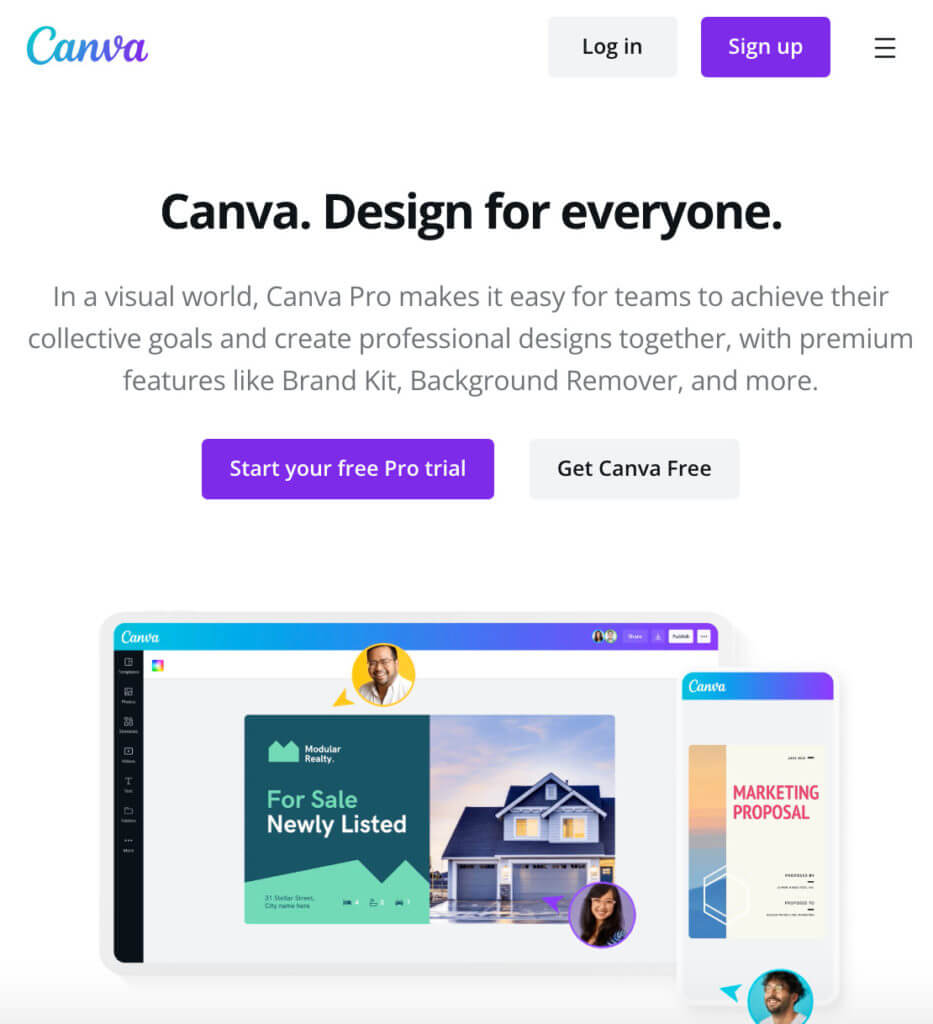
You notice that trial conversions of Canva Pro aren’t converting well.
Your assumption could be that users cancel because they don’t understand the full suite of available benefits.
Your hypothesis could be that increasing the number of educational emails throughout the user’s trial period would increase the conversion rates of trial users by 10%.
The independent variable, or what you’re changing to better understand the outcome, is the number of emails you send throughout the trial period.
The dependent variable, or what you’re measuring as you make changes to the independent variable, is the percentage of new customers who convert at the end of their trial period.
Knowing the value you’ll provide to your customers also helps you determine how you’ll design the emails.
It’s not about the number of emails but the value they provide inside. This is where you’ll carefully design your experiment to showcase the premium membership.
2. Ship your experiment
Start by A/B testing. It’s the simplest way to have a control group to compare against your independent variable.
In this example, your first move would be sending an email about the premium membership benefits versus not sending an email. Then you’d measure the lift to understand the value of sending that email.
If there is some lift in your conversion rate, you can start experimenting with other variables to try and beat the original lift level.
Next, you might look at the copy in the email and test whether language about price or language about features performs better.
Set another A/B test and keep repeating that process while benefiting from the successful experiments.
3. Analyze your experiment
Measure the results and key metrics. Was your hypothesis correct? What else did you learn about your customers throughout the A/B testing process?
Here, you’d measure metrics like what percentage of users converted to a paid membership, as well as email performance metrics like open rate, click-through rate, and unsubscribes.
Ask questions like:
- Did a certain email have a significant bump in opens?
- What trends can you track relating open rate to time of day or week, or subject line copy?
- What was user behavior following them clicking through to your site?
- Did they bounce immediately or browse your content and features?
Questions like these should get the wheels turning about future experiments you can run.
4. Automate and scale OR learn and redesign
Depending on the success of your campaign, the last phase will be to automate and scale or take your learnings and redesign some or all elements of your experiment.
In the case of Canva, if a certain email outlining the value of the premium membership boosts the conversion rate by 10%, automating that email to go out to all free trial customers should add 10% more value into your business.
Automating that successful email allows you to focus on the next experiment.
No matter the outcome of your experiment, you’re learning and collecting data about your customer behavior. This information should fuel your future experiments and campaigns.
Conclusion
Once you have a handle on your marketing growth process, running experiments can help you learn a ton about your customers and uncover even more opportunities to improve their experience.
Don’t be afraid to fail. All experiments, even those that don’t produce the desired outcome, push you closer to your growth goals.
To learn more about creating a growth strategy from industry experts, take CXL’s Growth Marketing Minidegree.


